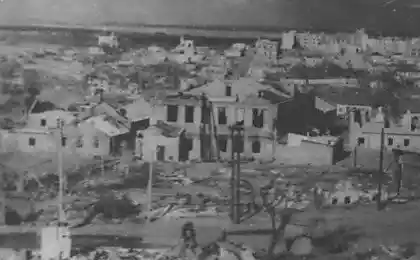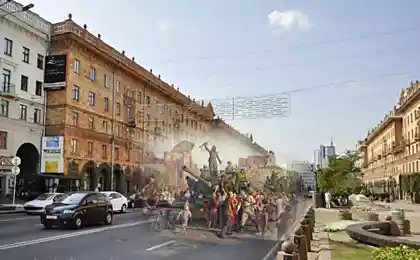1728
The new Museum of the Great Patriotic War in Minsk


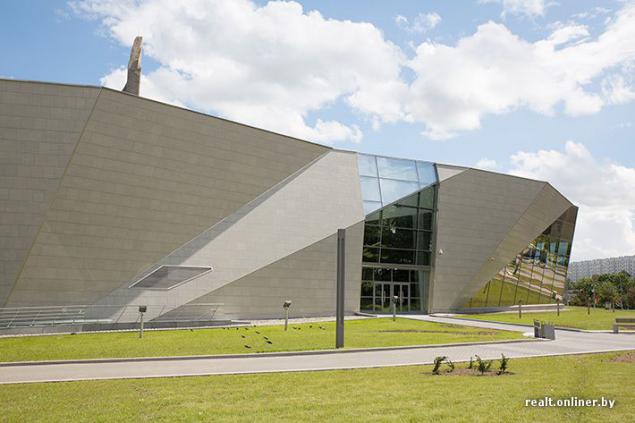
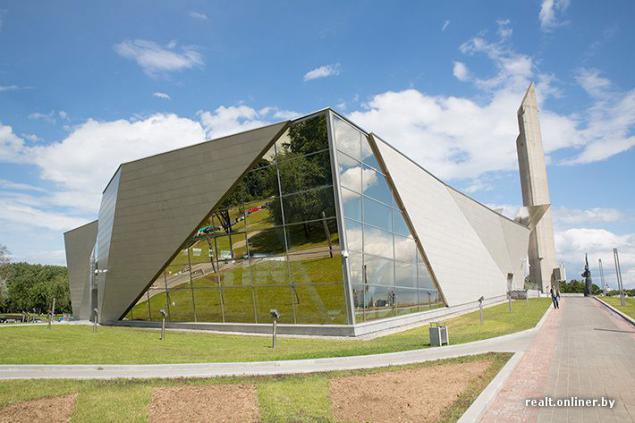

Suffice nontrivial architecturally building with golden dome and surround the red flag has long attracted the eyes of Minsk residents and guests. Yet literally until the last days "filling" of the museum remained a mystery for everyone who was not involved in its construction. During the construction of the building culture minister only made allusions to the fact that "in the new museum will be more fully exhibits, which are now stored in the museum, as well as multimedia devices will be more».

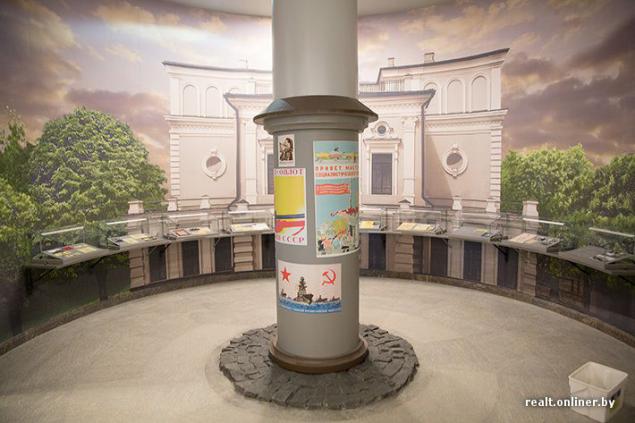
Today, we can confidently say that the new museum certainly impress not only the already impressionable schoolchildren, but also older visitors: the exhibition halls and met with the scope and spirit. And though not all exhibits are still in place, and work is continuing on the premises, the level of metropolitan attractions, built by architect Victor Kramarenko felt.

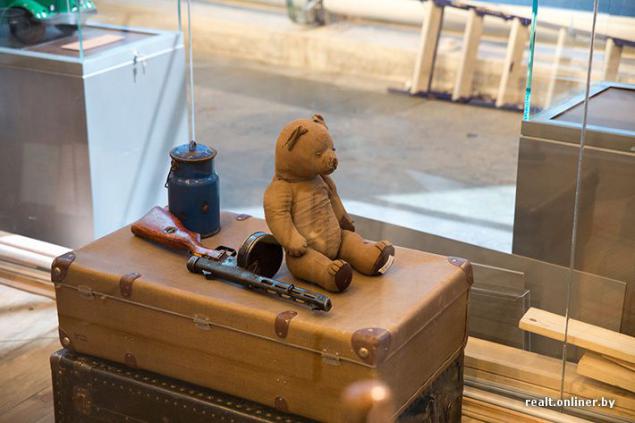
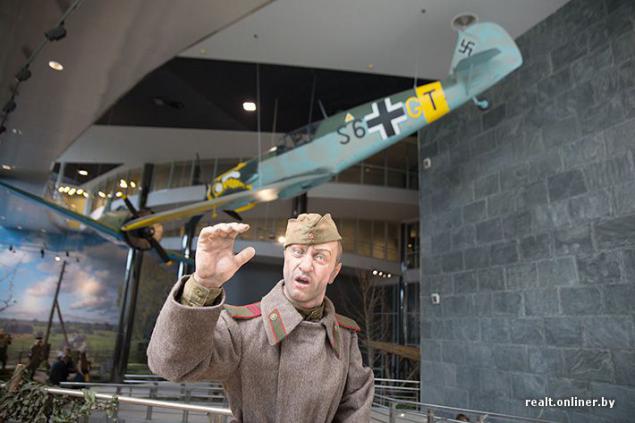
The area of the new museum is huge - about 15 000 sq. m, 3,300 of which are located 11 exhibition halls. Given the complex design ideas (broken lines of the facade, numerous crossings, including "air", a transparent dome), the staff of the institution, accustomed over the years to the classic rectangular halls, I had to do everything possible to adapt their ideas to an unusually organized space.



The only conspicuous drawback - the lack of really big flat vertical surfaces on which to place the pictures of the impressive size, fully demonstrated in the old museum, until recently located on the October Square.
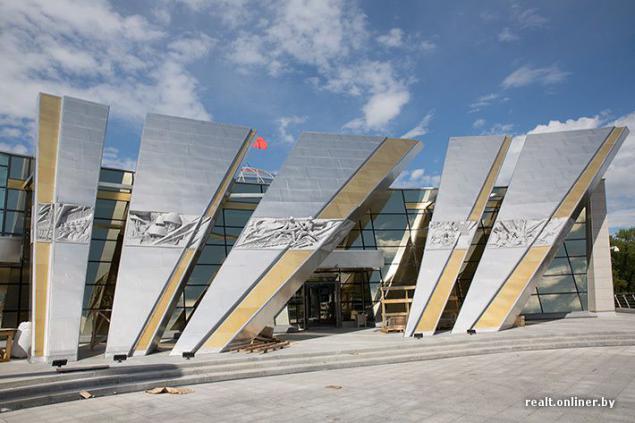

Curiously, entrance for visitors is not under the eye-catching reliefs and mirror "fireworks." To get to the halls of the museum will have to go down the stairs along until a fountain on the first level.


It was here, in the place where April 27 is already distant 2010, the Head of State laid a commemorative capsule with a message for future generations, and will begin the tour. What is hidden in the round "funnel" under the boards - still a secret. It will be known only after the opening. But we can assume that the inscription "Here zahoўvaetstsa pamyats ab Fifth, we abavyazany zhytstsёm Kama" will be "warm" eternal flame.
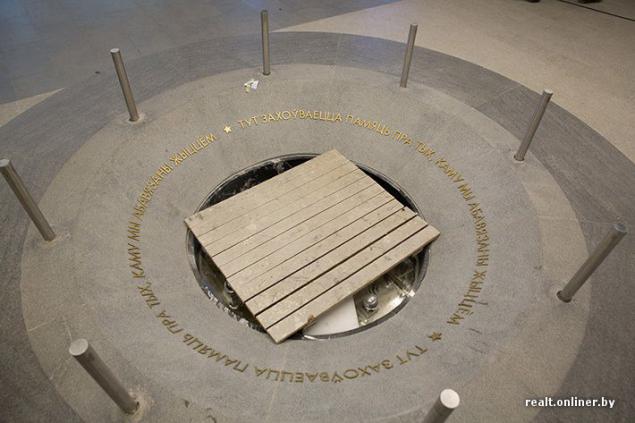
As for the cost of tickets, then the matter to the museum has not yet been decided. One thing is clear: the entrance will not be so penny as before - for the spectacular installation, an interesting story of the guide and experience will have to pay a bit more expensive than the old museum visitors are accustomed to.

The first room is called the "War and Peace" and is rather philosophical in nature: a huge sphere, not connected at the time of our visit with modern gadgets, during the tour will be projected political and geographical map of the world, beautiful scenery. The hidden meaning of the demonstrations taking place in the hall - people need to protect the fragile peace and harmony on earth.


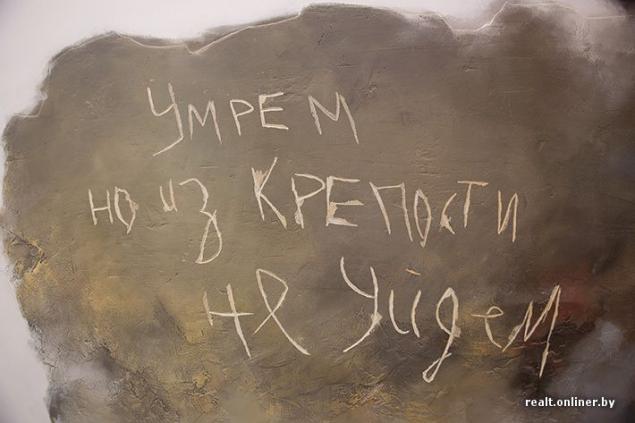
The second hall tells the story of a brief pre-war peaceful life. On the floor were sealed key historical dates: from the signing of the 1919 Treaty of Versailles on the termination of the First World War and ending with the treacherous invasion of Soviet soil of the German troops in 1941. In the old museum of the two "lyrical and philosophical" rooms were not.

"Our museum of the Great Patriotic War, without exaggeration, unique, he began to be created even during the hostilities. Can you imagine, despite the fact that the battle for Moscow was in full swing, at the Academy of Sciences of the USSR has taken the decision to create a commission that would be collected documents on the war, "- says the head of the sector of scientific and methodical work of the museum Vladimir Faletsky.
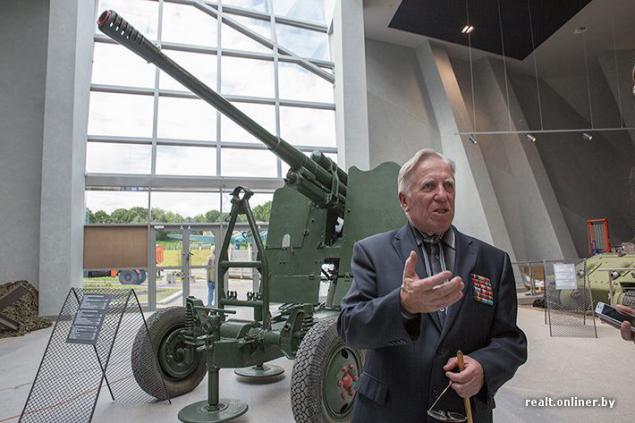
"A June 6, 1942 the same commission is created when the Communist Party of the BSSR - continues a retired colonel, a member of the fighting in Afghanistan, Vladimir Polikarpovich. - In the autumn of 1943 a decision on the establishment of the museum, which would reflect the struggle of the Belarusian people against the Nazi invaders. And after the liberation of Minsk, despite the fact that the capital was very broken, one of the surviving buildings in Liberty Square did give a future museum. Thus, the Belarusian museum became practically the first in the world, where they began to collect and organize information on the Second World War ».
"As you can see, the museum is not yet open, the work here is night and day, but by 2 July, we will do everything" - confidently says our guide.

On the concept of a large hall - "The Way of War" - we thought long and museum workers, and architects. Spacious and bright, the room filled with mostly original military equipment. Tanks, airplanes, cars - the history of each unit know by heart guides.
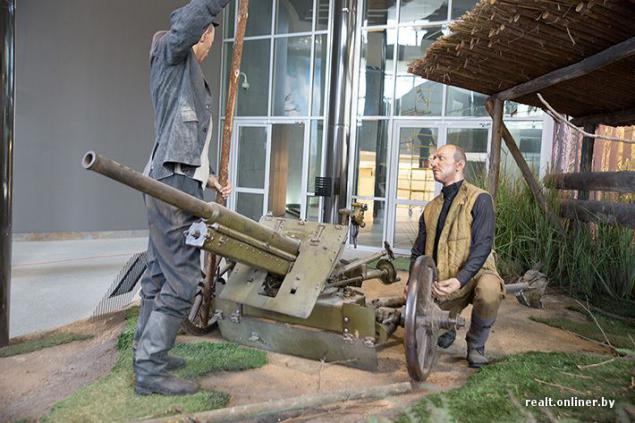




"It contains unique exhibits. For example, this machine, also called the "lorry", it was built in 1932 at the Gorky plant. Before the war, the car was purchased by collective farms in Vitebsk region, but with the outbreak of hostilities driver Pavel Mikhailov, assigned to the machine, along with a car called the front.

In it, he fought at Moscow, Leningrad, carried loads in besieged Leningrad and saved the child. Received two wounds, still drove to Berlin. When firing from the front, taking into account all the merits of the Red Army, the machine decided to give him. On it he returned to his native Belarusian village. Until his last days Paul, he worked on the machine, first lifting the farm, then help villagers and relatives after his death bequeathed to pass the car in the Great Patriotic War Museum in Minsk, "- says the difficult" life "history exhibit Vladimir Faletsky.
In the neighborhood - the unique original tanks: vseprohodimy armored Soviet T-34 and the German T-3. Under the ceiling - the basic speed of the Red Army fighter I-16 and maneuverable Messerschmitt-109, recognized as the best fighter of WWII. A little further - "corncob", aka "Heavenly slug", aka "the foreman front».



It is noteworthy that in the halls of the new museum has done everything to even people with disabilities feel comfortable. In addition to the elevator stops at every floor, moving from room to room can be carried out on wide special ramps, which also tried to stylize runways (small lights embedded in the floor, reminiscent of flashing lights). After rising to the "monorail", you can see the exhibition from above.
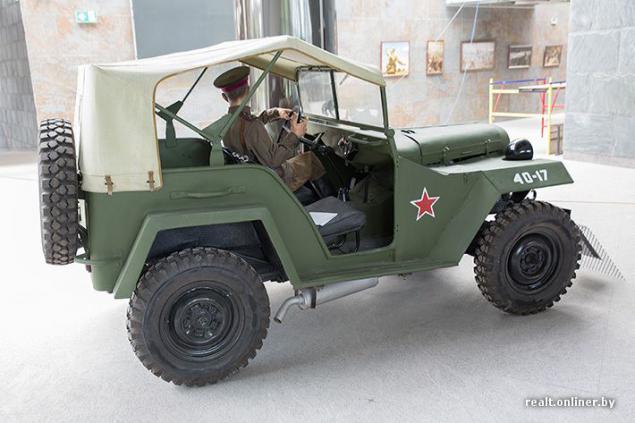



In the hall of "defensive battles," says tour guides is an interesting installation that amaze visitors. When the museum will officially start work and all equipment will be connected, will appear before the audience almost true picture of the first military actions in the Brest Fortress. "The soldiers sit as living and signalman smoothly reports:" I fortress - lead the fight. " Will look very impressive, modern technology can do a lot, "- explains the museum staff.



Frontline field equipment.

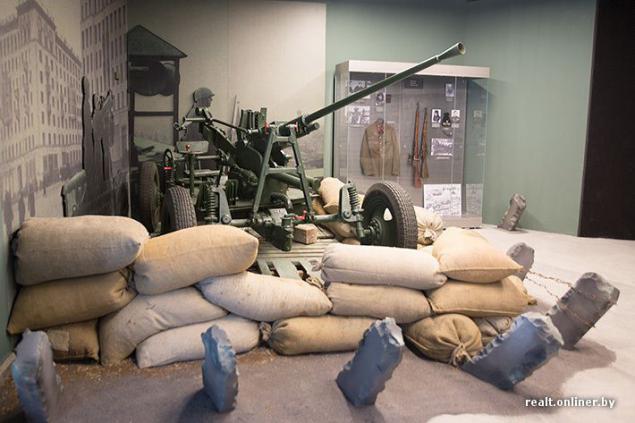

Several rooms of the new museum dedicated to the Great Patriotic War archival documents. Workers institutions agree that school lessons of history dedicated to World War II, you can vary the exposure visit and study materials presented here.





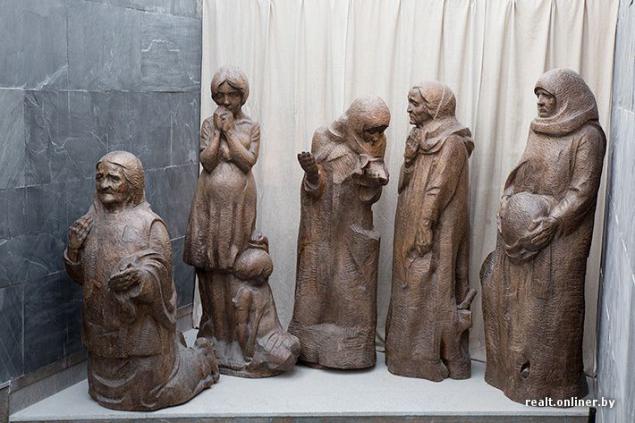
"This sculpture is made of wood. It reflects real events: one of the Belarusian villages called Levyatichi because of the war became a widow. The inhabitants of the village is still preserved the tradition: every year the women, taking the bread out of the house and valuables out on the road that once went to the front of their husbands and fathers. They are asking God to return them to relatives, "- says Vladimir Polikarpovich.
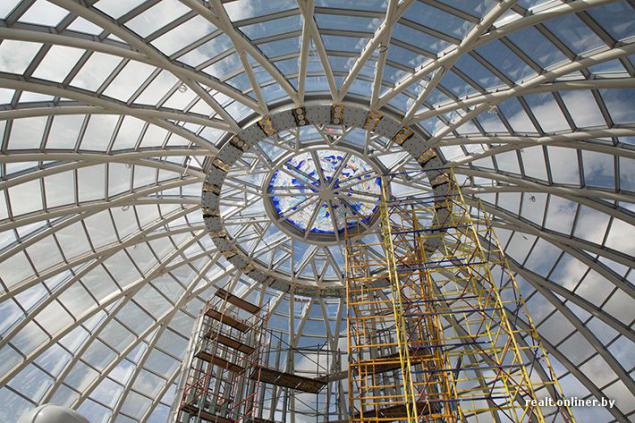
On the top floor, under the transparent dome is pure white and light-flooded "Hall of Victory." It lists the names of all Belarusian military units and immortalized the names of fellow countrymen, who received the title of Hero of the Soviet Union.
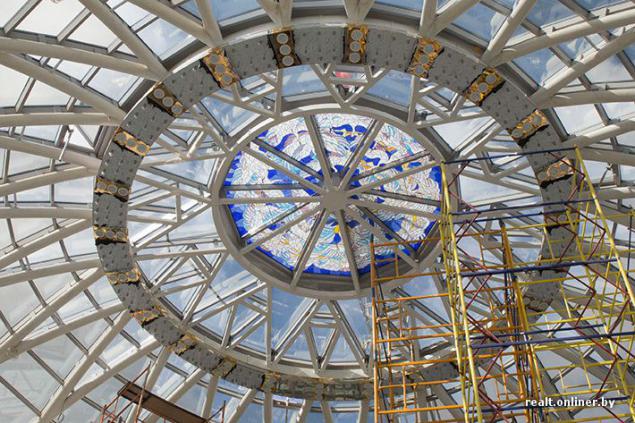
Source: realt.onliner.by




















